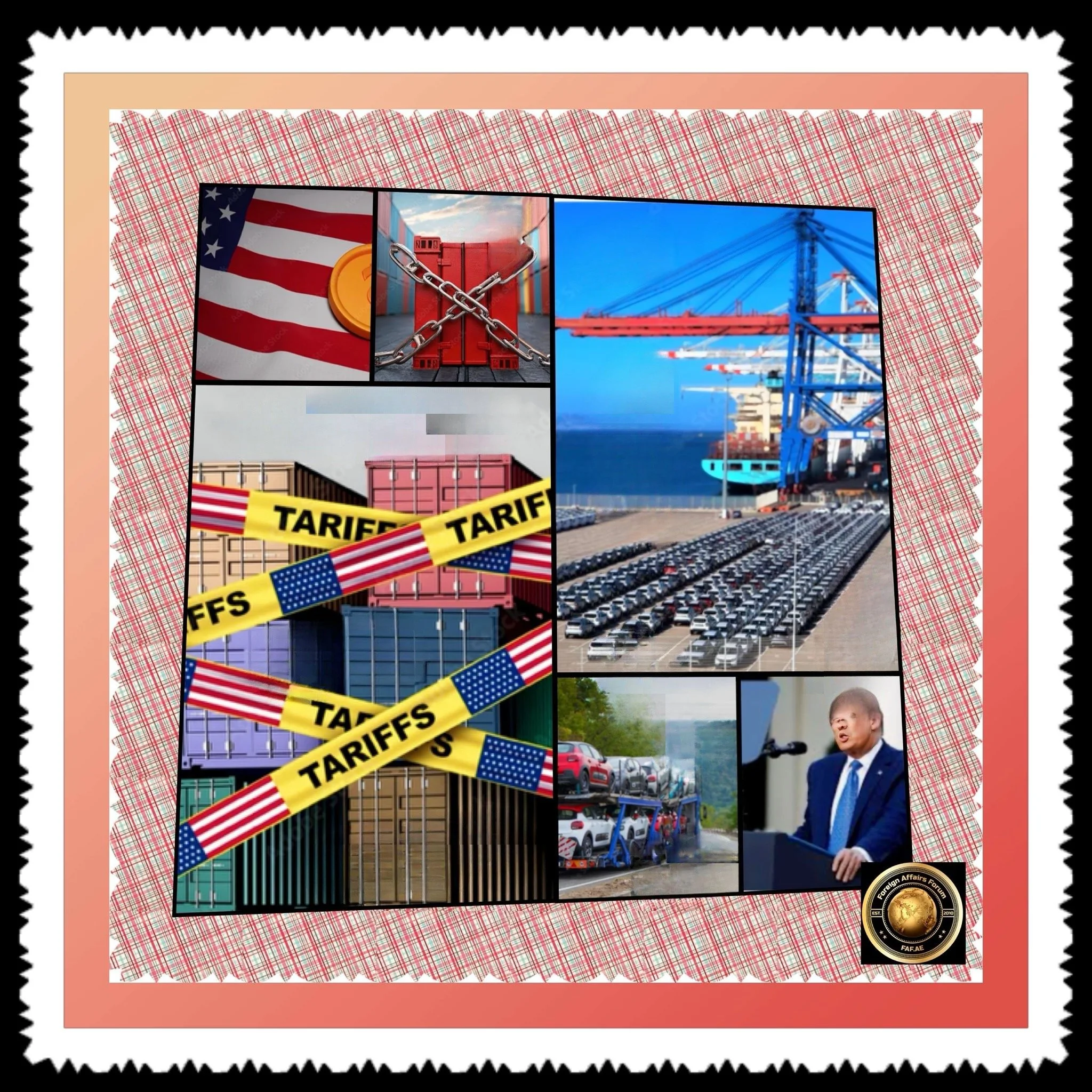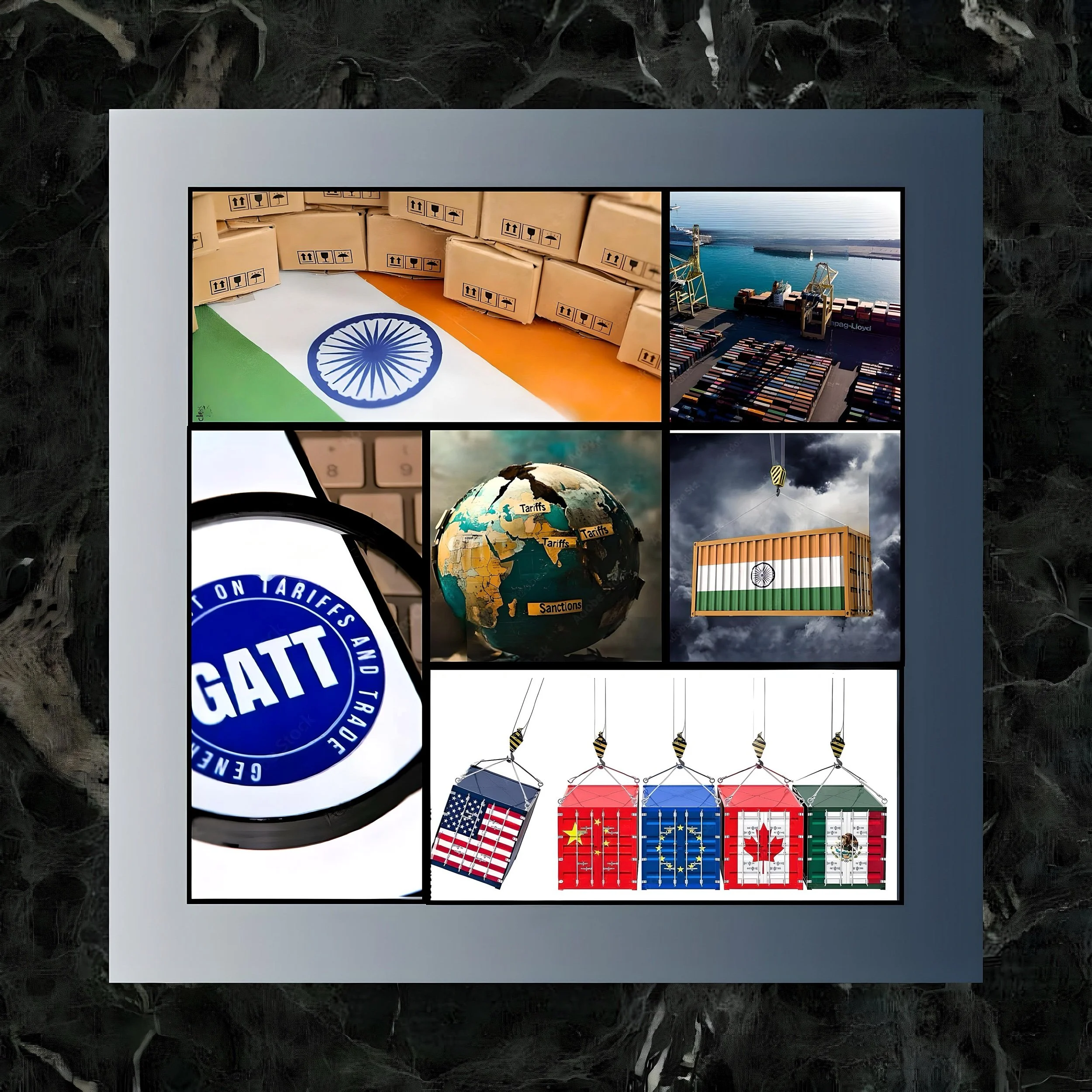Impact of 25% Auto Tariffs on U.S. Automotive Exports
Introduction
President Donald Trump’s 25% tariffs on imported automobiles and parts, effective April 2, 2025, have triggered a complex chain reaction in global trade dynamics, with significant implications for U.S. automotive exports.
While the administration frames these tariffs as a strategy to revitalize domestic manufacturing, their implementation introduces risks of retaliatory measures, supply chain fragmentation, and reduced competitiveness in international markets.
Retaliatory Tariffs and Export Market Contraction
Immediate Threats from Key Trading Partners
The tariffs have provoked swift pledges of retaliation from major U.S. trade partners, directly threatening automotive exports
Canada
As the largest importer of U.S.-built vehicles (53% of total exports, or 1.2 million units annually), Canada has proposed a 25% tariff on $30 billion worth of U.S. goods, including automobiles and parts.
This could add $7,500 to the price of a $30,000 vehicle exported to Canada, rendering American models uncompetitive against locally produced alternatives.
European Union
The EU, which imported $38.4 billion worth of U.S.-made vehicles in 2024, is preparing retaliatory tariffs targeting luxury models from BMW, Mercedes-Benz, and Ford.
European Commission President Ursula von der Leyen condemned the U.S. tariffs as “bad for businesses and consumers,” warning of measures to protect EU interests.
Japan and South Korea
Both nations, critical markets for U.S. luxury and specialty vehicles, are evaluating reciprocal tariffs.
Japan’s Prime Minister Shigeru Ishiba stated Tokyo would “consider all options,” while South Korean automakers Hyundai and Kia face profit squeezes that could reduce U.S. export demand.
Erosion of Price Competitiveness
The reciprocal tariff framework erodes the cost advantages of U.S.-built vehicles
Mexico
U.S. automakers hold 14% of Mexico’s auto market (2.19 million units sold in 2024).
A 25% tariff could cede ground to Asian and European rivals with localized production, particularly for models like the Ford Bronco and Chevrolet Silverado, which rely on 40–45% imported parts.
EU Luxury Segment
Cadillac and Lincoln, which derive 25% of sales from overseas markets, risk losing share to German brands if EU tariffs escalate.
A 25% EU duty on Dodge Hellcats exported to Europe could add $12,000–$15,000 to the price.
Supply Chain Disruptions and Production Costs
Fragmentation of USMCA Integration
The tariffs destabilize North American supply chains under the United States-Mexico-Canada Agreement (USMCA), which enables cross-border production efficiencies:
Multi-Pass Components
Parts like engines and transmissions cross borders 6–8 times during production.
Each crossing now incurs a 25% duty, adding $9,200–$10,500 per vehicle for Ford and GM.
Export-Oriented Plants
BMW’s South Carolina plant (exporting 70% of its X5/X7 SUVs) and Mercedes-Benz’s Alabama facility (exporting 40% of GLE/GLS models) face 12–15% margin compression due to tariffs on EU-sourced transmissions and Mexican electrical systems.
Cost Inflation and Production Halts
Tariffs on imported parts raise production costs for export-focused models
Tesla Cybertruck
Reliance on Mexican battery cells could increase production costs by $4,000 per unit, undermining competitiveness in European markets.
Ford F-150
Despite U.S. assembly, less than 50% of domestic parts content exposes it to tariff-driven price hikes, complicating exports to Latin America and Asia.
Strategic Shifts in Global Manufacturing
Accelerated Offshoring and Production Relocation
Automakers may relocate export-focused production to bypass tariffs
Asian Expansion
Toyota and Honda could shift U.S.-bound Camry and Accord production to Thailand or Indonesia, leveraging lower labor costs and existing trade pacts.
European Localization
Ford’s Kentucky-built Lincoln Nautilus, which is exported to China, might be relocated to EU facilities to avoid Beijing’s retaliatory tariffs.
Decline in Export Volume
Projections indicate a 15–20% reduction in U.S. automotive exports by 2026 due to:
Demand Destruction
Higher prices from retaliatory tariffs could suppress overseas orders. Canada’s proposed tariffs alone might cut U.S. vehicle exports by 13.6% annually.
Model Rationalization
GM may reduce production of the Corvette, 30% of which is exported, to prioritize domestic-market vehicles.
Sector-Specific Vulnerabilities
Electric Vehicle (EV) Export Ambitions
The tariffs jeopardize Biden-era goals to position the U.S. as an EV export hub:
Battery Supply Chains
Tesla’s reliance on Mexican lithium-ion cells exposes its Texas-made Cybertruck to $4,000 cost increases, undermining EU market competitiveness.
EU Carbon Border Taxes
The EU’s 2026 Carbon Border Adjustment Mechanism (CBAM) could impose additional fees on U.S.-made EVs deemed non-compliant with sustainability standards.
Luxury and Niche Market Erosion
High-end U.S. exports face disproportionate risks:
Performance Vehicles
Dodge’s Hellcat models, popular in the Middle East, could see demand wane if retaliatory tariffs add $12,000–$15,000 per unit.
Cadillac Escalade
A 25% EU tariff could price this model out of competition against German rivals like the Mercedes G-Class.
Long-Term Structural Impacts
Reorientation of Global Trade Alliances
The tariffs accelerate decoupling from traditional partners:
EU Diversification
Volkswagen and BMW are expanding partnerships with Asian battery suppliers, reducing reliance on U.S. components.
MERCOSUR Pivot
Brazil and Argentina may prioritize trade deals with China, sidelining U.S. exports in favor of cheaper alternatives.
Innovation and R&D Constraints
Higher production costs divert capital from export-focused innovation:
GM’s Tennessee EV Plant
Postponed $2 billion investment due to tariff uncertainty, delaying electrification timelines.
Supplier Bankruptcy Risks
Tier-1 suppliers like Magna International, providing 18% of U.S. auto exports, face liquidity crises from disrupted orders.
Conclusion
Navigating a Contraction in Export Capacity
The 25% auto tariffs will likely reduce U.S. automotive exports by $18–$24 billion annually within two years, reshaping the industry’s global footprint.
While the administration envisions a resurgence in domestic manufacturing, the immediate reality involves:
Retaliatory Barriers eroding price competitiveness in critical markets.
Supply Chain Balkanization raises production costs for export-oriented vehicles.
Strategic Offshoring to bypass tariff walls, particularly in EVs and luxury segments.
To mitigate these impacts, policymakers must balance protectionism with incentives for export-oriented innovation, such as expanding the Advanced Manufacturing Production Credit (AMPC) for EV components.
Without such measures, the U.S. risks ceding hard-won export markets to global rivals better positioned to navigate the new trade landscape.





